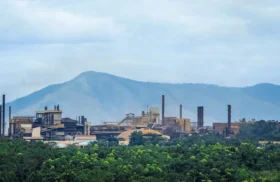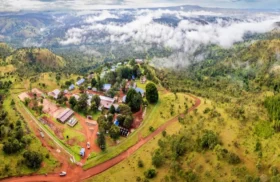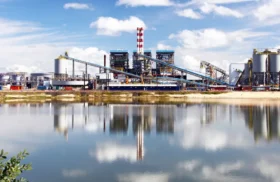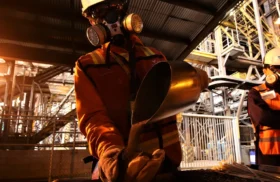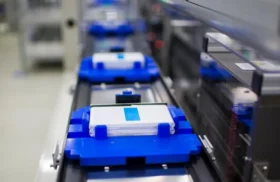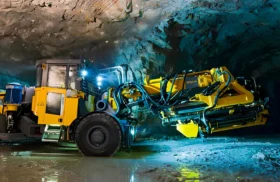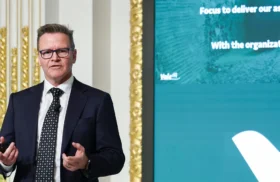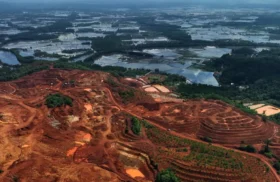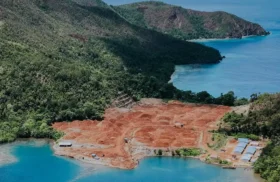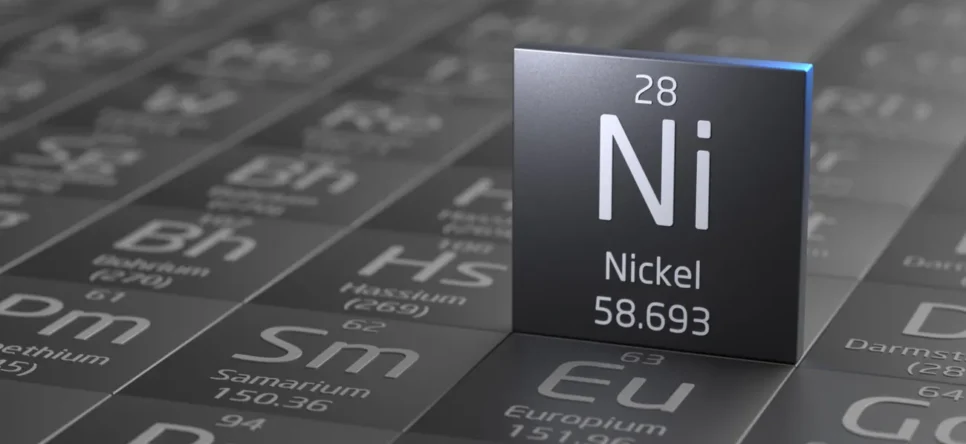
Nickel (Ni, atomic number 28) sits in the heart of today’s energy transition. A silvery-white transition metal, it weighs in at 8.908 g cm⁻³, melts at 1 455 °C, and boils at 2 913 °C. Its face-centred-cubic lattice, naturally passive oxide skin, and ferromagnetism up to 358 °C give it the twin gifts of toughness and magnetic shielding—traits prized from kitchen benches to deep-sea cables.
Those physical and chemical properties funnel nickel into two strategic arenas. First, when blended into chrome steel it creates the famous 300-series stainless grades that line commercial kitchens, chemical plants, and desalination pipes. Second, ultrapure class-1 nickel (≥ 99.8% Ni) dissolves into nickel sulfate and ultimately becomes the nickel-rich lithium-ion cathodes that can push an electric vehicle (EV) beyond 600 km on a single charge. Little wonder Brussels placed nickel on its 2024 Critical Raw Materials Act “strategic” list, while Washington kept it on the USGS 2025 critical-minerals roster.
Class-1 vs. Class-2. Class-1 products—briquette, cathode, powder—trade on the LME and flow straight into battery chemistry. Class-2 forms—nickel pig iron (NPI), ferronickel, and matte—carry more iron and usually sell at a US$3 000–4 000 t⁻¹ discount to class-1 metal.
Discovery and industrial journey
The nickel story begins in 1751, when Swedish mineralogist Axel Fredrik Cronstedt, hoping to smelt copper from a green stone, instead isolated a new metal and branded it kupfernickel—“the devil’s copper.” A century later, the United States swapped the silver in its small-value coins for a cupronickel alloy containing 25% nickel.
The real inflection point arrived in 1913. Sheffield metallurgist Harry Brearley slipped 8% Ni and 12% Cr into molten steel, forging the first truly stainless cutlery. The jet age pushed nickel further, as super-alloys shrugged off temperatures above 1 000 °C. Fast-forward to 2013: Panasonic and Tesla commercialised NCA cathodes with roughly 80% nickel, slicing cobalt content in half. By 2024, high-nickel NCM 811 captured 43% of global EV cathode volume—proof that nickel history and nickel industrial uses keep rewriting themselves.
Global production and supply dynamics
The International Nickel Study Group (INSG) pegs mined supply at 3.53 Mt for 2024 (+4.6% y/y) and sees 3.66 Mt in 2025 (+3.8%). Laterites provide 74% of ore, while sulfide output has slipped below 1 Mt for the first time on record.
Indonesia, the swing factor. Refined nickel from the Indonesian archipelago rocketed from 38 kt in 2015 to 2.2 Mt in 2024—around 63% of global production. A 2020 ore-export ban diverted raw laterite into domestic rotary-kiln electric-furnace (RKEF) smelters, unleashing a wave of low-cost NPI that now anchors the industry cost curve. Yet even with record capacity, weather-driven ore shortages led Jakarta to float production caps in April 2025, briefly nudging LME cash back above US$15 100 t⁻¹.
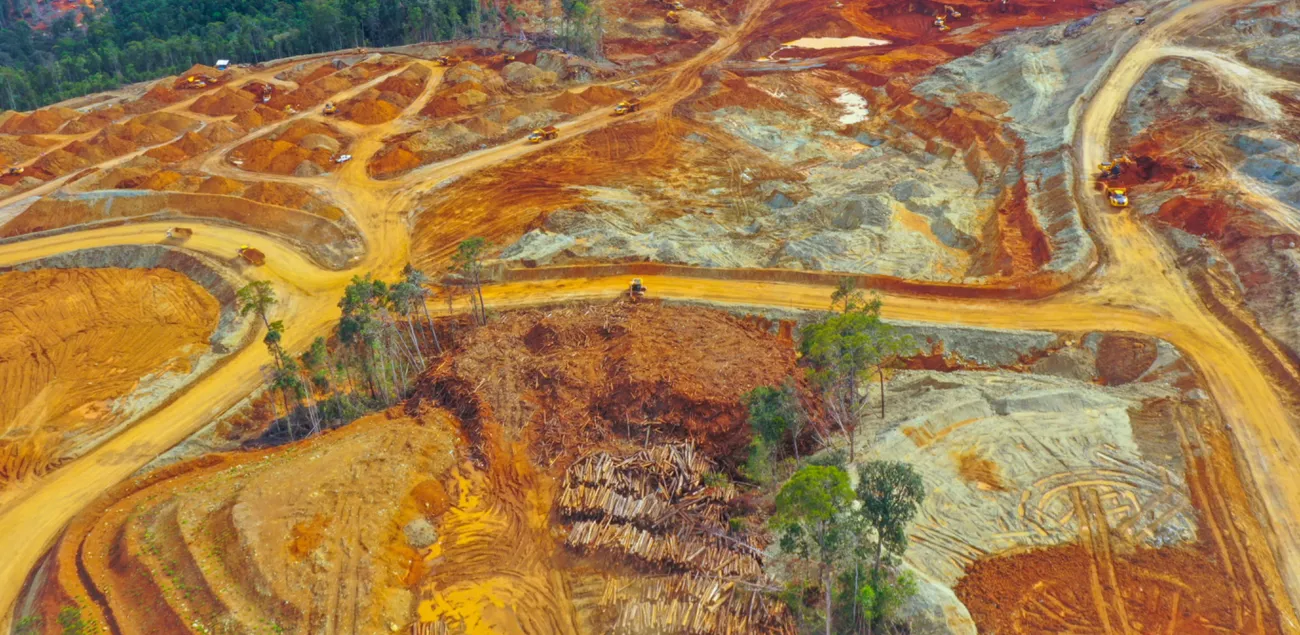
Shutterstock
Processing routes
- RKEF: Saprolite laterite → NPI at cash costs near US$13 000 t⁻¹.
- HPAL: Limonite laterite digested at 270 °C / 40 bar acid to yield mixed hydroxide precipitate (MHP). Three Indonesian HPAL lines—HNC, Huafei, Merdeka SLNC—added >200 kt Ni p.a. in 2024-25.
- Matte-to-sulfate: Tsingshan’s Morowali converters bleed iron to forge “grey” matte that Chinese refiners leach to sulfate at ~US$4 000 t⁻¹ conversion cost.
Carbon and ESG. Coal-fuelled RKEF smelters emit 57-70 t CO₂ per tonne of nickel—double Vale Sudbury’s 29 t CO₂ /t and far above the 4-7 t CO₂ /t seen at hydromet sites like Long Harbour and HNC HPAL. Satellite imagery reveals roughly 75 000 ha of Sulawesi forest loss since 2015, feeding Western automakers’ calls for traceable, low-carbon nickel in 2025.
Market balance. INSG puts the 2025 surplus at 198 kt, yet 90% of that glut sits in low-grade class-2 material. Should any HPAL start-up slide by even three months, the nickel-sulfate market could flip from surplus to squeeze.
Leading Producer Companies
Major Producers
- Tsingshan Holding Group (China/Indonesia) – Morowali and Weda Bay industrial parks churned out about 600 kt nickel (mostly class-2 NPI/matte) in 2024; first 30 kt p.a. cathode pilot starts H2-25.
- Nornickel (Russia) – Polar & Kola sulfide hubs plus Harjavalta refinery delivered ~205 kt class-1 nickel in 2024; ramping inert-anode test cells to cut CO₂.
- Vale (Brazil/Canada/Indonesia) – Sudbury, Voisey’s Bay, Onça Puma and upcoming Pomalaa JV produced 160 kt in 2024 (≈66% class-1); targets 250 kt by 2030.
- Jinchuan Group (China) – Jinchang complex and PT KRS ferronickel smelter give capacity for ≈190 kt electrolytic nickel plus 200 kt ferronickel; 10 kt sulfate line due 2025.
- Glencore (Canada/Norway/Australia) – Raglan, Nikkelverk, Murrin Murrin produced 82.3 kt class-1 nickel in 2024; commissioning recycling circuit in Kristiansand.
- BHP Nickel West (Australia) – Mt Keith-Leinster mines, Kwinana refinery logged 81.6 kt matte/powder in FY-24; site enters care-and-maintenance from Oct 2024.
- Sumitomo Metal Mining (Japan/Philippines) – Harima refinery plus Taganito & Coral Bay HPALs lifted electrolytic nickel to 59.3 kt in FY-24; new matte furnace under construction.
- Eramet-Tsingshan Weda Bay (France/Indonesia) – IWIP rotary-kiln lines yielded 30.5 kt NPI (Ni) in 2024; HPAL module for 45 kt MHP starts mid-2026.
Mid-sized Players on the Move
- Nickel Industries (Australia/Indonesia) – Four RKEF lines plus 10% Huayue HPAL stake generated 127 kt nickel metal in 2024; evaluating 55 kt cathode refinery.
- PT Vale Indonesia – Sorowako matte producer guiding 70.8 kt in 2024; Pomalaa HPAL with Huayou & Ford approved, start-up 2027.
- Merdeka Battery Materials – Three HPAL projects (CATL, GEM, SLNC) totalling 180 kt MHP capacity; first 60 kt line commissioning mid-2025.
- Horizonte Minerals – Araguaia ferronickel Line-1 designed for 14.5 kt Ni p.a.; financing restructuring underway after 2024 cost over-run.
- Talon Metals (US) – Tamarack sulfide project backed by US$115 m DOE grant; feasibility drilling for 2030 start, targeting 36 kt Ni-sulfate.
- Clean TeQ Sunrise (Australia) – Permitted hydromet plant slated for 25 kt nickel-sulfate p.a. once FID is secured; offtake talks ongoing through 2025.
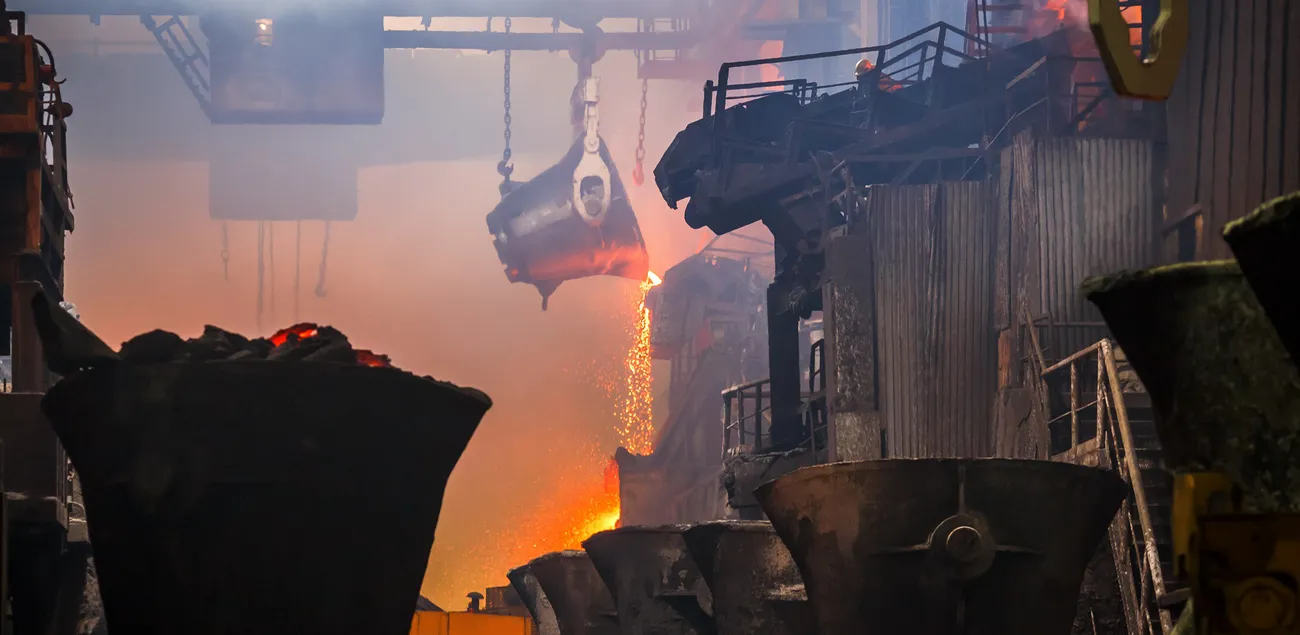
Shutterstock
Industrial applications driving nickel demand
Stainless steel remains the vacuum cleaner of the nickel universe, swallowing 64-66% of primary nickel in 2024—about 2.3 Mt. Battery cathodes, though, are sprinting from niche to necessity: BloombergNEF counts 370 kt Ni in 2023 and >430 kt in 2024, roughly 14% of total demand. The metal intensity of nickel-rich chemistries is striking. NCM 811 requires about 640 g Ni per kWh, so a 75 kWh long-range sedan hosts ~48 kg of nickel—five times the dose in an LFP pack.
Chemistry tug-of-war. LFP’s cost edge has trimmed nickel’s growth curve—S&P Global now projects nickel-bearing cathodes in 55% of EVs sold in 2030, down from 70% last year. Still, premium marques (think Tesla Model S or Hyundai Ioniq 7) chase energy density, and nickel in 2025 remains central to that pursuit.
Recycling. EU battery rules mandate 90% nickel recovery by 2027 and minimum recycled-content thresholds by 2031. Collection is the bottleneck: fewer than 10 kt of nickel came from spent batteries in 2024, yet announced smelter and hydromet projects could process ~70 kt Ni p.a. by 2030, nudging recycled share toward 12% of demand.
Nickel price dynamics
LME cash nickel averaged US$15 328 t⁻¹ in 2024, sank to a five-year nadir of US$13 865 t⁻¹ in April 2025, then bounced to ~US$15 105 t⁻¹ in late June when Indonesia hinted at mine-permit rationing. Shanghai Futures Exchange front-month contracts marched in step, rarely straying more than ¥1 000 t from London. Chinese battery-grade sulfate commands ¥27 229 t⁻¹ (~US$3 750), implying a US$3 200 t⁻¹ premium over the nickel it contains.
Forecasts. Reuters’ January base-metals poll sees nickel hovering between US$14 800 and US$16 200 t⁻¹ through H2-25. Street analysts lift their 2026 view to roughly US$17 637 t⁻¹, betting that marginal RKEF furnaces shutter whenever prices languish below US$13 000 t⁻¹.
Investment opportunities and risks
- Upstream equities. Diversified miners with class-1 exposure (Vale, Nornickel) change hands at 5-7× 2025 EV/EBITDA. Indonesian pure-plays often trade at book value as investors price in carbon risk and policy flux.
- Mid-stream growth. HPAL operators—Huayou, Merdeka, Nickel Industries—could lock in handsome processing premia. Wood Mackenzie tallies a US$1.4 bn EBITDA swing if sulfate premiums stay north of US$3 000 t⁻¹.
- Recycling optionality. Li-Cycle’s Rochester hub and the Glencore-ACE tie-up illustrate royalty models that clip coupons on recycled nickel units rather than mined tonnes.
Risks. A faster-than-expected shift to LFP, another Indonesian NPI flood, or tougher EU carbon-border taxes could cap upside. Flip the script—introduce an Indonesian export levy or shut high-carbon furnaces—and >300 kt capacity could evaporate, triggering fresh volatility.
Future outlook
The IEA’s Stated Policies path doubles nickel demand to 4.2 Mt y⁻¹ by 2030; its Net-Zero scenario pushes beyond 6 Mt. BloombergNEF echoes a 1.5 Mt battery pull by 2030, implying a structural class-1 deficit of 200-300 kt even if every announced HPAL arrives on time.
Supply-gap math. With realistic delays, cumulative HPAL shortfall may hit 600 kt Ni by 2030. Closed-loop recycling might backfill 150 kt, leaving a residual gap that could hold prices in a real-terms US$15 000–20 000 t⁻¹ corridor—volatile, yet above today’s RKEF cash costs. Black-swan wildcards include a sodium-ion leap that halves nickel intensity, or a coordinated Western embargo on rainforest-linked matte.
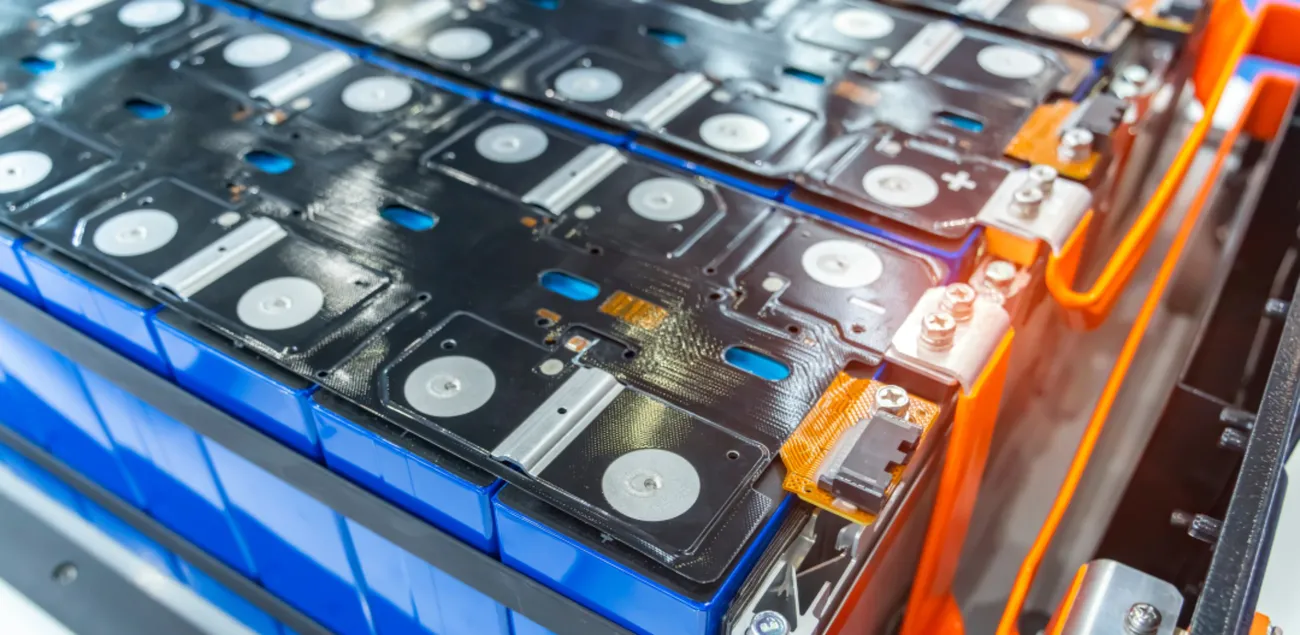
Shutterstock
Frequently Asked Questions (FAQ)
Why is nickel critical for both stainless steel and high-energy EV batteries?
It hardens and protects steel against corrosion and boosts energy density in lithium-ion cathodes.
Difference between class-1 and class-2 nickel?
Purity: class-1 (≥ 99.8%) feeds battery supply chains; class-2 goes mainly into stainless steel.
Nickel content of a long-range EV?
Roughly 45-50 kg in a 75 kWh NCM 811 pack.
Mining and refining leaders?
Indonesia rules volume; Russia, Canada, and Australia anchor low-carbon class-1 supply.
HPAL and matte-to-sulfate—can they meet demand?
Together they offer >350 kt Ni p.a. capacity and continue to expand.
How does Indonesian NPI steer prices?
It sets the marginal cash-cost floor (~US$13 000 t⁻¹); oversupply pushed 2025 lows.
Are LFP or sodium-ion real threats?
Yes for budget models; high-performance vehicles still favour nickel cathodes.
Recycling progress?
<10 kt in 2024; announced projects could treat 70 kt+ by 2030 (~12% of demand).
Main ESG issues for laterite projects?
High CO₂ footprints (57-70 t t⁻¹), tailings, and deforestation pressures.
